I’m delighted to welcome a remarkably prolific author to the Gang as our guest today. Pamela Fagan Hutchins and I met early in our writing careers. Since then, she has published upwards of 30 books, mostly novels (award-winning romantic mysteries, a couple of children’s books, and some non-fiction, too). Lately, she’s been turning out some modern tales of Western adventure.
The secret to her success? To my mind, it’s that she spins new tales faster than a bullet train, and that her stories engage readers with heart and humor.
Here is her latest OMG work schedule, in her own words:
I’m lucky that I write fast, type fast, and no longer have kids at home or a job outside of writing. I also believe that writing is something you can get more efficient at over time.
After thirty-two novels and seven nonfiction books, I’ve had a lot of practice!
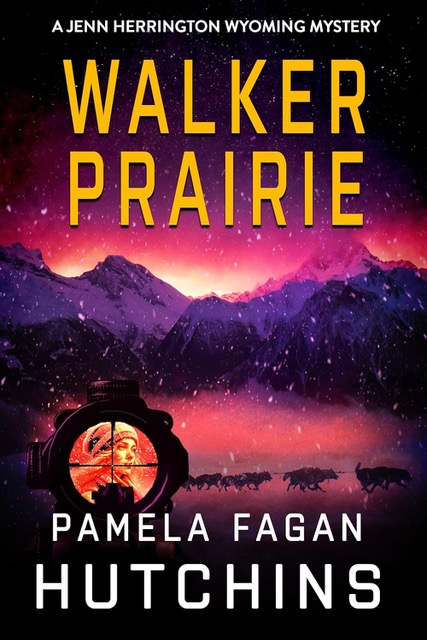 But I am firm about sticking to set writing hours and setting word and page count goals to keep me focused. I eliminate most distractions, and I reward myself frequently… lots of snacks!
But I am firm about sticking to set writing hours and setting word and page count goals to keep me focused. I eliminate most distractions, and I reward myself frequently… lots of snacks!
Way back in 2020, my agent challenged me to write Big Horn, the Jenn Herrington Wyoming mystery that ultimately won me a publishing contract with Hachette UK’s Bookouture. But my editor wanted me to change it substantially or write a different book. I was happy with Big Horn just how it was. I opted to publish it myself and write a Detective Delaney Pace novel for Bookouture.
Two things happened. First, Big Horn slayed and kept slaying for two solid years. Meanwhile had to write three Delaney Pace books and one Patrick Flint family adventure mystery during the year after Big Horn came out. And move to Denmark for my husband’s work. Then Bakersfield. Then France. Have two foot surgeries. Welcome my first two grandkids.
Ya know—life stuff.
Despite Big Horn having had the best release of any book I’d ever written—better than Delaney Pace did, originally, although it’s picked up a lot of steam!—I did not get the follow-up book out for 18 months. In indie publishing terms, that’s a century. And I had a heck of a time pulling myself out of Delaney’s and Patrick’s worlds and back into Jenn’s.
But I’d already outlined five follow-up books while I was writing Big Horn. So, the book I rolled out next was Walker Prairie. It had the planned plots and subplots and the same gritty-but-kinda-cozy feel which some people love.
 Between the time I outlined Walker Prairie (2021) and when I wrote it (2024), I acquired two Alaskan Malamute sled dogs, Willett and Sibley! They seemed like the perfect lighthearted addition to Jenn and Aaron’s world, so I wrote them in, and just like in real life, they proceeded to WOO and HOWL and JUMP AROUND until they’d pretty much hijacked the book. The plot remained the same, but the adventure elements surrounding the climactic scenes changed to feature two beautiful, often-naughty, and occasionally terrifying FLOOFS (my term for fluffy goofs.)
Between the time I outlined Walker Prairie (2021) and when I wrote it (2024), I acquired two Alaskan Malamute sled dogs, Willett and Sibley! They seemed like the perfect lighthearted addition to Jenn and Aaron’s world, so I wrote them in, and just like in real life, they proceeded to WOO and HOWL and JUMP AROUND until they’d pretty much hijacked the book. The plot remained the same, but the adventure elements surrounding the climactic scenes changed to feature two beautiful, often-naughty, and occasionally terrifying FLOOFS (my term for fluffy goofs.)
So, whether you pick up Walker Prairie because you’re dying to read about or continue with Jenn, her veterinarian husband Aaron, her legal associate Kid James, and Jeremiah Johnson (the loveable skunk), or because you love gritty-cozy romantic legal thrillers, or Wyoming mysteries, or just love books with FLOOFS, I am delighted that the wait is over and Walker Prairie is finally here.
And I love the book! You can get your copy here:
USA Today bestselling author of the Detective Delaney Pace series / Host of Crime & Wine / Silver Falchion Best Mystery Winner
Published by Bookouture/Hachette UK and SkipJack Publishing
Thanks for stopping by, Pamela!
Gay Yellen’s writing career began in magazine journalism. She served as the co-writer/editor for the international thriller, Five Minutes to Midnight (Delacorte), a New York Times “New & Notable.” The success of that book led to her first romantic mystery, The Body Business, Book 1 of the Samantha Newman Mystery Series. The Body Next Door soon followed, and The Body in the News in 2023. The series has won multiple awards, including a Readers’ Favorite Mystery / Chanticleer Mystery & Mayhem 1st Place / InD’Tale Crowned Heart for Excellence / Silver Falchion Finalist/ and an American Legacy Best Cozy Award. https//:GayYellen.com

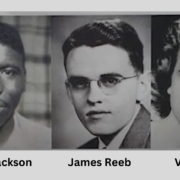

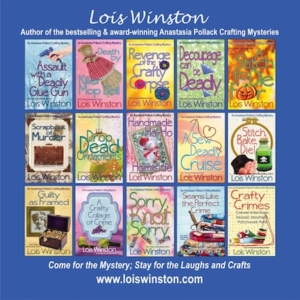 USA Today and Amazon bestselling author Lois Winston began her award-winning writing career with
USA Today and Amazon bestselling author Lois Winston began her award-winning writing career with 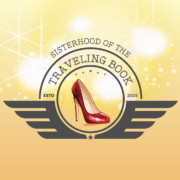
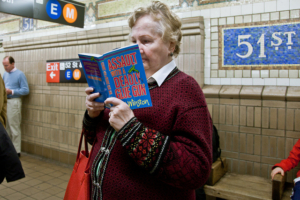 For my first Sisterhood of the Traveling Book post, I’m reaching back to 2012 for the best promo ever.
For my first Sisterhood of the Traveling Book post, I’m reaching back to 2012 for the best promo ever.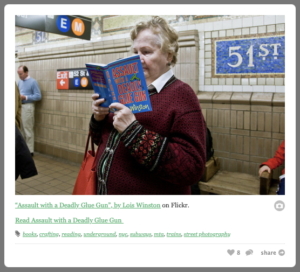
 Now, fast-forward fourteen years from the January 2011 series debut to this month, which saw the release of
Now, fast-forward fourteen years from the January 2011 series debut to this month, which saw the release of 
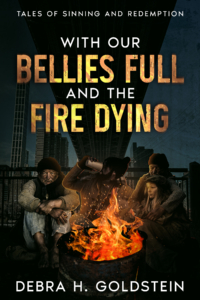 Happy Dancing – With Our Bellies Full and the Fire Dying by Debra H. Goldstein
Happy Dancing – With Our Bellies Full and the Fire Dying by Debra H. Goldstein

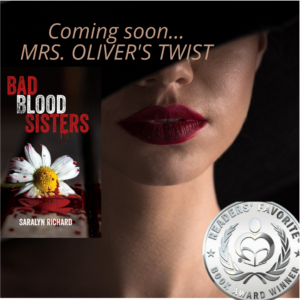
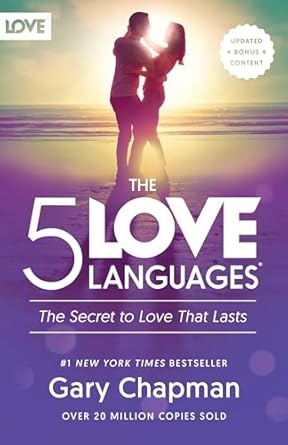 Ruchti challenged her readers to look up the 5 languages, so I did. They have been identified by Gary Chapman in his book,
Ruchti challenged her readers to look up the 5 languages, so I did. They have been identified by Gary Chapman in his book, 

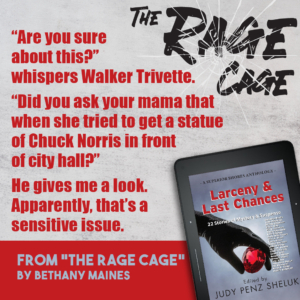 No, it’s not time for the Oscar’s or anything normal people care about. I’m talking about the extremely niche category of mystery short story awards. The
No, it’s not time for the Oscar’s or anything normal people care about. I’m talking about the extremely niche category of mystery short story awards. The 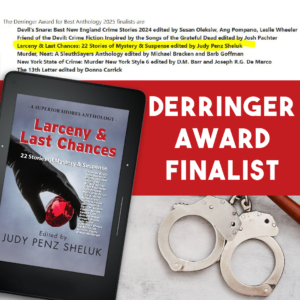

 But I am firm about sticking to set writing hours and setting word and page count goals to keep me focused. I eliminate most distractions, and I reward myself frequently… lots of snacks!
But I am firm about sticking to set writing hours and setting word and page count goals to keep me focused. I eliminate most distractions, and I reward myself frequently… lots of snacks! Between the time I outlined Walker Prairie (2021) and when I wrote it (2024), I acquired two Alaskan Malamute sled dogs, Willett and Sibley! They seemed like the perfect lighthearted addition to Jenn and Aaron’s world, so I wrote them in, and just like in real life, they proceeded to WOO and HOWL and JUMP AROUND until they’d pretty much hijacked the book. The plot remained the same, but the adventure elements surrounding the climactic scenes changed to feature two beautiful, often-naughty, and occasionally terrifying FLOOFS (my term for fluffy goofs.)
Between the time I outlined Walker Prairie (2021) and when I wrote it (2024), I acquired two Alaskan Malamute sled dogs, Willett and Sibley! They seemed like the perfect lighthearted addition to Jenn and Aaron’s world, so I wrote them in, and just like in real life, they proceeded to WOO and HOWL and JUMP AROUND until they’d pretty much hijacked the book. The plot remained the same, but the adventure elements surrounding the climactic scenes changed to feature two beautiful, often-naughty, and occasionally terrifying FLOOFS (my term for fluffy goofs.)

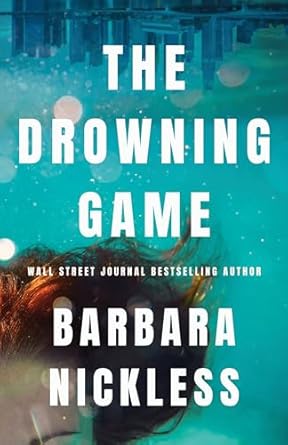 The Drowning Game has been named Best Book of 2024 by WRBH Reading Radio. “Although a difficult decision with so many good books, the winner of the 2024 WRBH Writers’ Forum Book of the Year Award is Barbara Nickless for The Drowning Game.” A huge thank you to the Writers’ Forum on WRBH!
The Drowning Game has been named Best Book of 2024 by WRBH Reading Radio. “Although a difficult decision with so many good books, the winner of the 2024 WRBH Writers’ Forum Book of the Year Award is Barbara Nickless for The Drowning Game.” A huge thank you to the Writers’ Forum on WRBH!